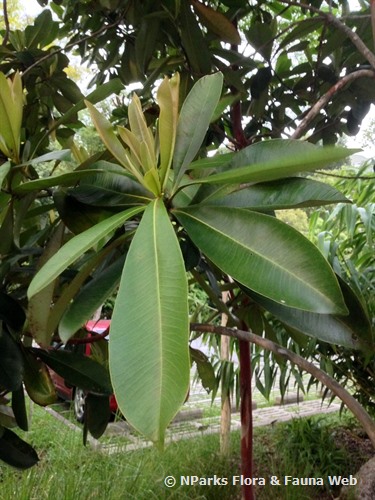
Back
Tristaniopsis merguensis (Griff.) Peter G.Wilson & J.T.Waterh.
| Family Name: | Myrtaceae |
| Common Name: | Hill Tristania, Keruntum, Pelawan |
Name
Classifications and Characteristics
| Plant Division | Angiosperms (Flowering Seed Plants) |
|---|---|
| Plant Growth Form | Tree (Medium (16m-30m)) |
| Mode of Nutrition | Autotrophic |
| Plant Shape | Rounded |
| Maximum Height | 30 m |
Biogeography
| Native Distribution | Andaman Islands, Mergui Archipelago, Cambodia, Vietnam, Peninsular Malaysia, Singapore, and Borneo |
|---|---|
| Native Habitat | Terrestrial |
| Preferred Climate Zone | Tropical |
| Local Conservation Status | Native to Singapore (Critically Endangered (CR)) |
Description and Ethnobotany
| Growth Form | It is a tree up to 30 m tall, with its smooth, light-brown,trunk bark flaking off in large, spiral, scroll-like pieces. |
|---|---|
| Foliage | Its leaves are spirally arranged at the end of twigs. The leathery leaf blades are variable in shape, blunt or pointed, and 3–17 by 2–7 cm, with the bases tapering to very short stalks. Its young leaves have pink leaf blades that have distinct, ear-like lobes encircling the twigs. |
| Flowers | Its small flowers are yellow, each with 5 white petals. They are found singly or in stalked clusters at the leaf axils. These clusters are up to 12 cm long and branched up to 5 times. |
| Fruit | Its round, woody fruits are up to 13 mm across, and half-immersed in a persistent, cup-like calyx. The fruits split into 3 parts when ripe to release many flat, winged seeds. Its ellipsoid seeds are 9 by 4 mm and are wind-dispersed. |
| Habitat | It grows in evergreen forests at low altitudes, and on ridges up to 1000 m altitude. It occurs locally in the Western Catchment Area. |
| Associated Fauna | Its flowers are insect-pollinated. |
| Cultivation | It can be propagated by seed. |
| Etymology | Latin Tristania, commemorating Marquess de Tristan (1776–1861), a French botanist; Latin merguensis, of the Mergui Archipelago, southernmost part of Myanmar, referring to one locality in the natural distribution of this species |
| Ethnobotanical Uses | Others: Its timber can be used to build houses. |
Landscaping Features
| Landscape Uses | Parks & Gardens |
|---|
Plant Care and Propagation
| Light Preference | Full Sun, Semi-Shade |
|---|---|
| Water Preference | Moderate Water |
| Plant Growth Rate | Moderate |
Foliar
| Mature Foliage Colour(s) | Green |
|---|---|
| Mature Foliage Texture(s) | Glossy / Shiny, Leathery |
Floral (Angiosperm)
| Flower Colour(s) | Cream / Off-White |
|---|
Image Repository
Others
| Master ID | 29091 |
|---|---|
| Species ID | 3404 |
| Flora Disclaimer | The information in this website has been compiled from reliable sources, such as reference works on medicinal plants. It is not a substitute for medical advice or treatment and NParks does not purport to provide any medical advice. Readers should always consult his/her physician before using or consuming a plant for medicinal purposes. |

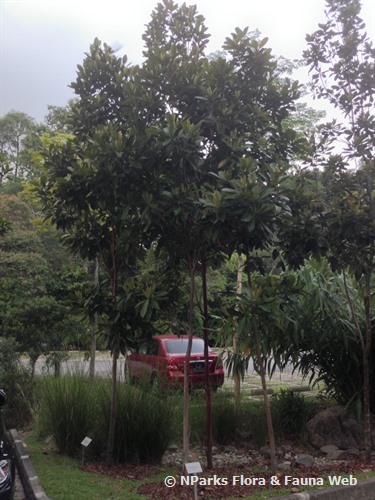
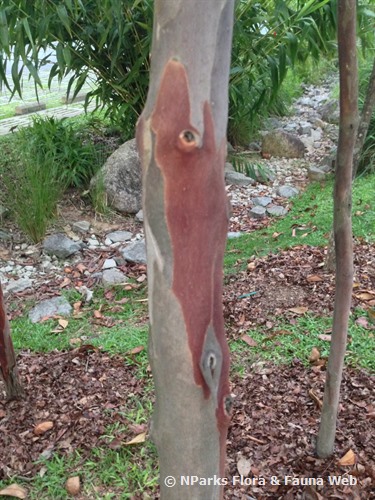
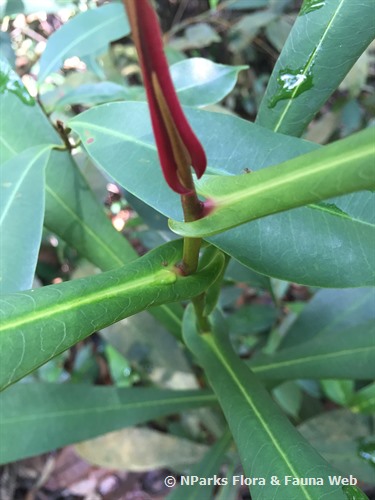
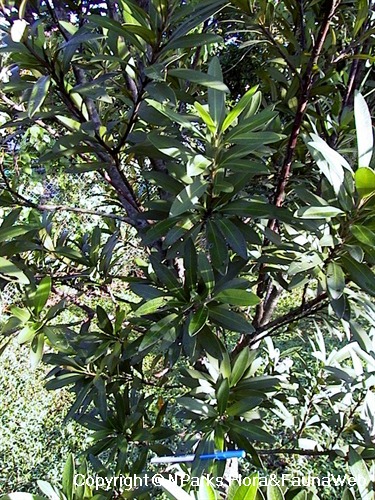
_lowres.jpg)

_lowres.jpg)